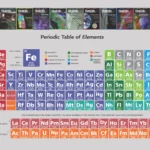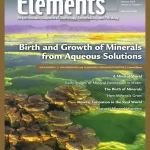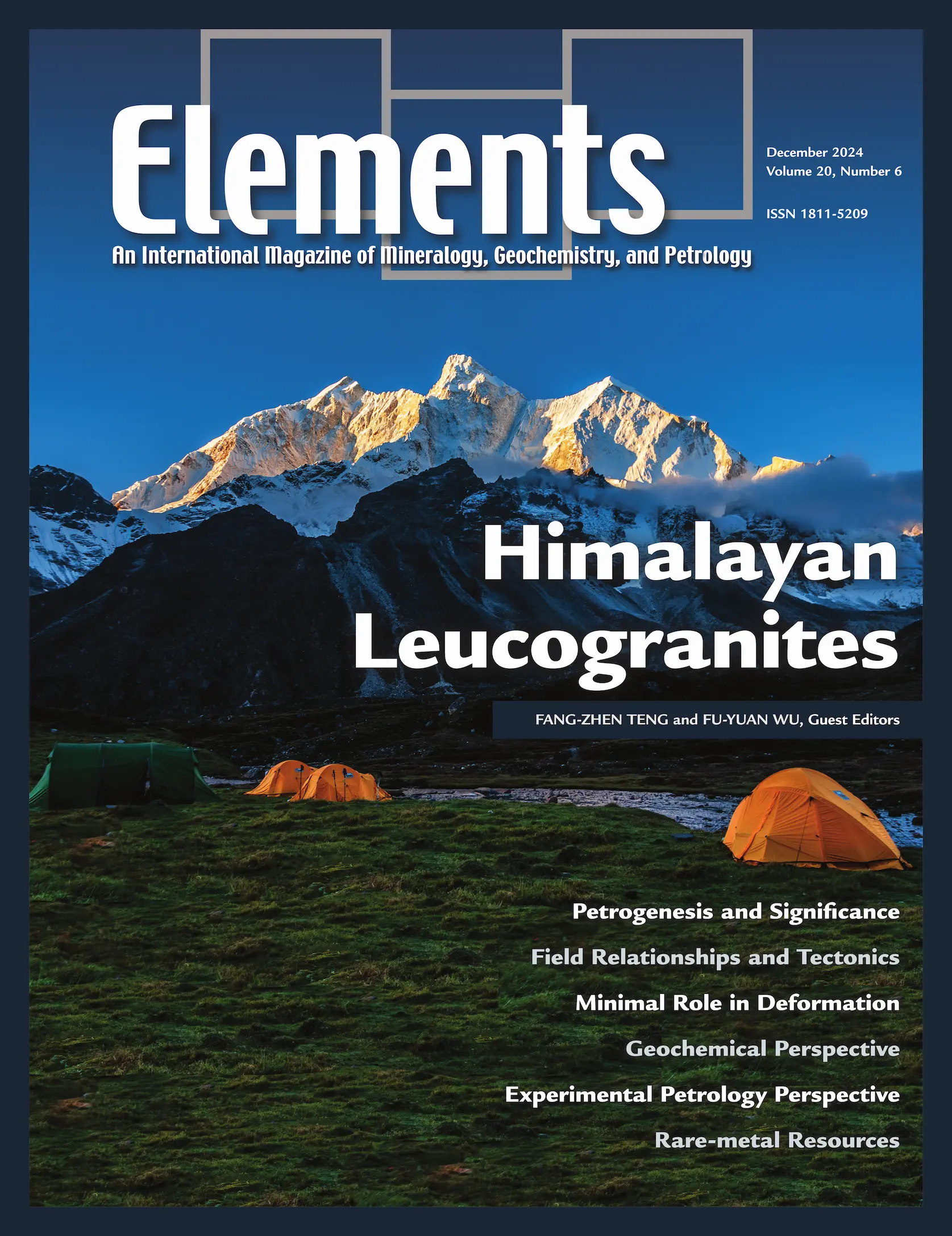
Periodic Table of Elements
October 26, 2024
Birth and Growth of Minerals from Aqueous Solutions, February 2025, Vol. 21, No. 1
April 17, 2025Himalayan Leucogranites, December 2024, Vol. 20, No. 6
$20.00
Himalayan leucogranites crop out intermittently over 2000 km along the Himalayan crest in the Himalayan-Tibetan plateau. They constitute some of the most well-studied granites in the world. They are considered to be purely crustal-derived melts and indicators of collisional orogenesis, and have greatly improved our general understanding of crustal anatexis, differentiation of felsic magmas, and tectonic evolution of the Himalayan-Tibetan Orogen.
Himalayan Leucogranites
December 2024, Vol. 20, No. 6
Himalayan leucogranites crop out intermittently over 2000 km along the Himalayan crest in the Himalayan-Tibetan plateau. They constitute some of the most well-studied granites in the world. They are considered to be purely crustal-derived melts and indicators of collisional orogenesis, and have greatly improved our general understanding of crustal anatexis, differentiation of felsic magmas, and tectonic evolution of the Himalayan-Tibetan Orogen. They provide a rare opportunity to explore the feedback relationships among geodynamics, tectonics, and magmatism in a classic continental collisional context. In this issue, we will describe our current understanding of the petrogenesis and significance of the Himalayan leucogranites by focusing on their tectonic and geodynamic background, source rocks, petrology, geochemistry, and links to orogenesis and economic resources.
Why You’ll Love Elements Magazine:
- Expert Contributors: Articles written by renowned researchers in the field of geoscience.
- Engaging Content: Join a community of readers who are passionate about Elements.
- Exceptional Quality: Each issue is printed on high-quality paper with stunning visuals and detailed illustrations that bring complex scientific concepts to life.
Order your copy of the December 2024 issue of Elements magazine today and explore Himalayan Leucogranites.
Related products
-
Toxic Metals In The Environment: The Role Of Surfaces, September 2005, Vol. 1, No. 4
$20.00Metals are prevalent in the environment. They are derived from both natural and anthropogenic sources.
-
Fluids in Planetary Systems, January 2005, Vol. 1, No. 1
$20.00Water and other geofluids play an important role in the geochemical and rheological evolution of the Earth and other bodies in the solar system. These fluids are responsible for the formation of hydrothermal mineral deposits, affect eruption behavior in volcanic systems and the geophysical properties of the mantle, and significantly affect the way in which rocks deform and fracture.
-
Early Earth, August 2006, Vol. 2, No. 4
$20.00The earliest Earth was a strange inhospitable world, yet transitions occurred culminating in the evolution of life within the first billion years. The preservation of a sparse and ambiguous rock record has encouraged debate.




